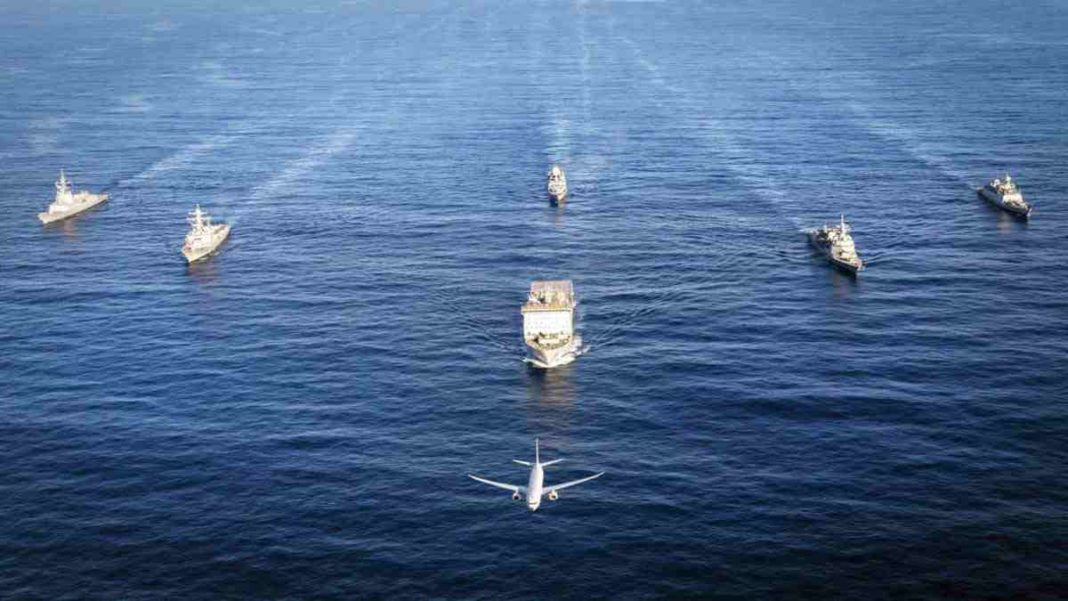INDIA/AUSTRALIA: The 27th edition of Exercise “Malabar-2023” concluded off the East Coast of Australia near Sydney on Monday, August 21.
Warships, submarines, and aircraft from four navies participated in the high-intensity exercises across air, surface, and undersea domains.
The exercise featured the active involvement of the Indian Navy, the Royal Australian Navy (RAN), the Japan Maritime Self Defence Force (JMSDF), and the US Navy (USN).
The event was structured in two phases: a harbor phase held from August 11th to August 15th and a sea phase spanning August 16th to August 21st.
Representing the Indian Navy were the indigenously built destroyer INS Kolkata, frigate INS Sahyadri, and the P8i Maritime Patrol Aircraft.
The contingent also included RAN ships HMAS Choules and HMAS Brisbane, USS Raphael Peralta, and JS Shiranui, in addition to submarines, fighter aircraft, maritime patrol aircraft, and shipborne helicopters, as stated officially.
During the sea phase, the ships embarked on exercises from Sydney harbor, while air assets operated from RAAF Amberley Brisbane, hosting the P-8I Dets with participation from IN, RAAF, and US P-8 crew members.
The sea phase of “Malabar 2023” showcased intricate and intense drills encompassing air, surface, and undersea domains, including weapon firings and cross-deck helicopter operations.
These joint exercises at sea enhanced war-fighting skills and promoted interoperability amongst the four navies for advanced maritime operations.
The seamless integration of air assets demonstrated remarkable coordination and interoperability between Indian, Australian, and US maritime patrol aircraft units.
The exercise not only reaffirmed the capability of the four navies to function as a unified force but also emphasized their shared dedication to maritime security and regional stability through collaborative training and mutual understanding.
Concluding five days of diverse exercises, the event underscored the robust cooperation, shared values, and collective capabilities of the four participating nations.
Their commitment to ensuring a free, open, and inclusive Indo-Pacific, thereby fostering peace and security for all, was prominently showcased.
Also Read: Indian Naval Ships Enhance Interoperability with UAE Navy in Bilateral Maritime Exercise



